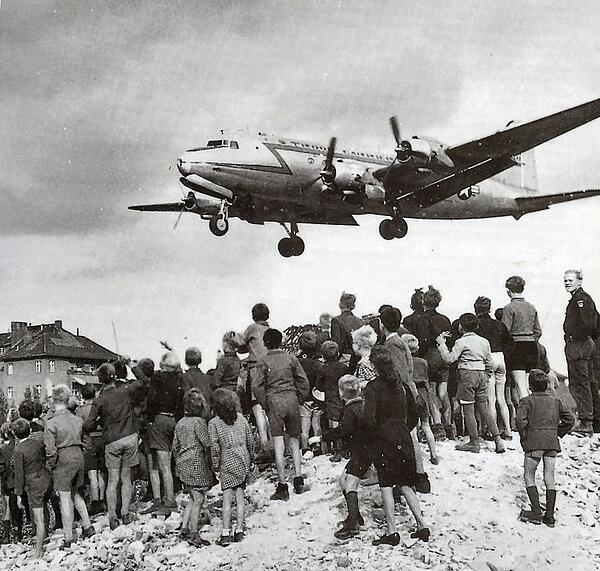Berlin after 1945
During the Cold War, Berlin became the symbolic heart of East-West hostility. The city was divided up into four sectors by the victors at the end of World War Two, but this quadripartite division soon transmuted into a bitter East-West split. The construction of the Berlin Wall in 1961 made concrete the political and ideological fissure between East and West.
At the end of World War Two, Germany was carved up into four zones by the victors. Berlin was also divided into four. Britain, America, France and the USSR each got one sector of Germany and one sector of Berlin. Berlin itself lay within the Soviet zone of Germany.
The USSR took a markedly different approach to Britain, America and France in its governance of Germany. The USSR wanted to ensure that Germany stayed weak so that it would never again attack Russia. The Soviets funnelled resources from Germany to the USSR. This way, the USSR could rebuild itself at Germany's expense.
Britain, France and America thought that a strong Germany would help democracy prosper after years of Nazi dictatorship. They also believed that a strong Germany would help rejuvenate the European economies.

As hostilities emerged between the victorious powers after 1945, dreams of ruling Germany as a single territory through the Allied Control Council disintegrated. A rigid divide between East and West emerged. In January 1947 Britain and America joined their respective zones to form the Bizone. In April 1949, the French zone was amalgamated with the Bizone to form the Trizone. In May 1949, the Trizone became the Federal Republic of Germany and in October 1949, the Soviets renamed their zone the German Democratic Republic (GDR).
By 1948 Germany was in the midst of a currency crisis. The Reichsmark had been devalued to the extent that some Germans were using cigarettes as a currency. In February, Britain and America suggested that the Reichsmark be replaced with a new currency. The USSR wanted to keep Germany weak and was therefore unconcerned about Germany’s economic woes. The Soviets rejected the suggestion.
In June, Britain, France, and the United States introduced the Deutsche Mark in their respective zones. The USSR wanted to prevent the use of the new currency in Berlin, but the Allies injected 250,000,000 DM into Berlin and it was quickly taken up in all four of Berlin’s zones. In response to his wishes being ignored, Stalin decided to force the West out of Berlin.
Stalin could not forcibly remove the Allies: America, unlike the USSR at this point, had the atomic bomb. Instead, he decided to impose a blockade on Berlin. He ordered the closure of all rail lines, canals and roads that entered west Berlin through the Russian sector. This cut off supplies of food and fuel to Berlin. In response, the Western powers decided to airlift supplies into Berlin. This was based on the assumption that Stalin would not dare to shoot down Allied planes whilst America had nuclear weapons. The airlife, named ‘Operation Vittles’, started on 26 June 1948. It was expected to last only three weeks, but the Soviet blockade was only lifted on 12 May 1949. The airlift officially ended on 30 September, fifteen months after its start date. The United States, Britain and Germany shared the costs. Upper estimates of the overall cost of the airlife reach $500, a staggering $4.96 billion in today’s money. After the end of the blockade, the Western powers retained their sectors in Berlin.
See also: Nazi Germany
MLA Citation/Reference
"Berlin after 1945". HistoryLearning.com. 2026. Web.
